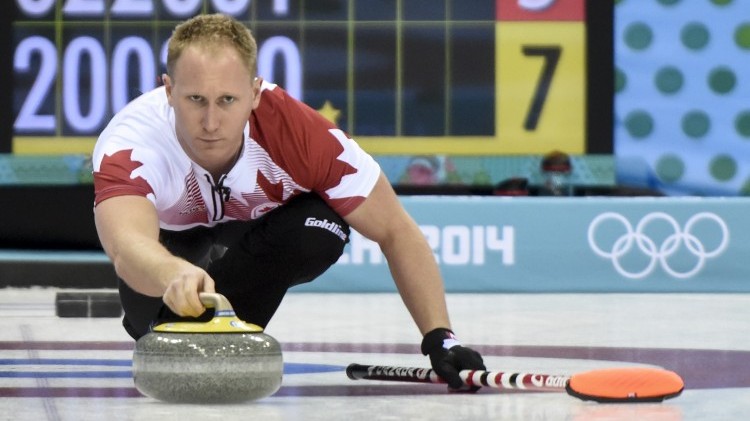How Canada draws to the button for Sochi gold
Men’s curling member E.J. Harnden on the strategy
Paul Chiasson/The Canadian Press
Share

The men’s curling team that goes for gold Friday includes the Harnden brothers, as well as their cousin at skip and a long-time buddy at third. Here, second E.J. Harnden explains how to execute a draw to the button with the game—and maybe the gold—on the line.
Here’s the scenario: The game is tied in the last end and we have the hammer—the last rock. We’re facing two opposing rocks situated on the right-hand side of the four-foot [the red ring], one on top of the other, with the back one biting the side of the button. Both are completely buried behind a centre-line guard halfway between the house and the hogline. We have no choice but to draw the button and execute a perfect shot to win the game.
Drawing the button is a finesse shot that results in the rock stopping on the button without removing anything. When the game is all tied up in the last end, it goes from routine to one of the hardest shots there is. And often it comes down to this.
This shot not only relies on the touch and feel of the skip; it also relies on the third to ensure the rock has the correct line, and on the sweepers, who are responsible for sweeping it to the desired location.
1. Brad Jacobs, our skip, and Ryan Fry, our third, discuss how much ice to take. That’s slang for where Ryan needs to put the broom; his broom is the skip’s release point, so from there the rock curls and stops where you want it to. Hopefully. On a huge shot like this they’ll take more time to discuss. Ryan Fry would likely be holding the broom on the edge of the eight-foot. (X)
2. Brad comes down the ice and confirms where we need to place the rock. We’ll communicate positive thoughts: “You got this” or “Let’s put it there.” There are nerves and anxiety. It’s up to me and Ryan [Harnden] to get it to the spot. Brad can throw it within a range of a couple of feet, because world-class sweepers can manipulate a rock up to seven feet.
3. Brad would throw an in-turn draw. You have the handle at about a 10 o’clock position, and you’re turning it to a 12 o’clock position. That makes a rock curl to its right and around that guard.
4. I’d like to think Brad would release it and say, “I think that weight’s real close.” We’d communicate back to Brad: “Yep, real good.”
5. Ryan and I are on and off the rock, heads up, gauging how the rock is travelling, telling each other “This is good” or “This needs to go.” Ryan Fry is communicating how the rock’s curling. He might say, “Line’s real good,” which means you just gotta make sure the weight’s right.
6. Everything is amplified. Brad is 10 feet behind us, following his rock down. Ryan’s telling us, “It looks good; make sure it’s here,” and we’re letting them know where we think it is. Ryan [Harnden] and I are focusing on the last 10 feet. They’re yelling, “Keep an eye!” “Weight’s good!”
7. It stops on the button, we nail it. Then it’s a massive celebration.